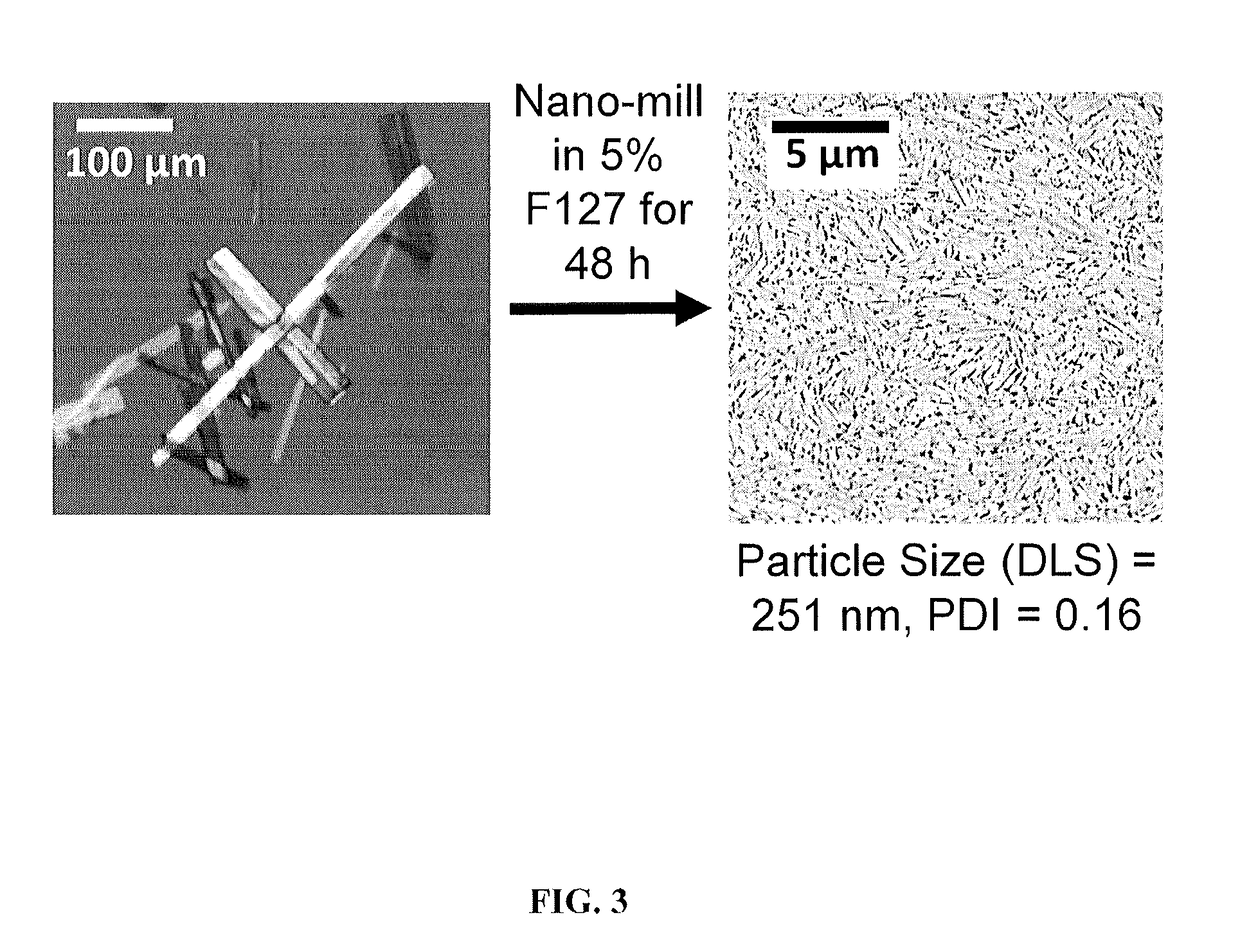Meropenem derivatives and uses thereof
a technology of meropenem and derivatives, applied in the field of meropenem derivatives, can solve the problems of difficult delivery of antibiotic meropenem to the respiratory tract for the treatment of bacterial infections, and especially difficult delivery of drugs to the respiratory tra
- Summary
- Abstract
- Description
- Claims
- Application Information
AI Technical Summary
Benefits of technology
Problems solved by technology
Method used
Image
Examples
example 1
on of the Compounds
[0422]The compounds provided herein can be prepared from readily available starting materials using the following general methods and procedures. See, e.g., Scheme 1 below. It will be appreciated that where typical or preferred process conditions (i.e., reaction temperatures, times, mole ratios of reactants, solvents, pressures, etc.) are given, other process conditions can also be used unless otherwise stated. Optimum reaction conditions may vary with the particular reactants or solvents used, but such conditions can be determined by those skilled in the art by routine optimization procedures.
[0423]Additionally, as will be apparent to those skilled in the art, conventional protecting groups may be necessary to prevent certain functional groups from undergoing undesired reactions. The choice of a suitable protecting group for a particular functional group as well as suitable conditions for protection and deprotection are well known in the art. For example, numerou...
example 2
n of Compound I-A-1 to Meropenem
[0430]Compound I-A-1 was suspended in homogenized CF sputum (CFS) at a concentration of 20 μg / mL (99.5:0.5 CFS / DMSO, 1.2 mL total volume) and incubated at 37° C. Aliquots (0.2 mL) taken after 0, 0.5, 1, 2 and 4 h of incubation were stored at −80° C. prior to bio-analytical processing. After a series of extractions in organic solvents, the resulting free meropenem was quantified by tandem mass spectrometry (FIG. 5).
example 3
f Compound I-A-1
[0431]The following describes a non-limiting example of forming MPPs using a core comprising compound I-A-1. Coarse crystals of compound I-A-1 were nanomilled in an aqueous dispersion containing PLURONIC® F127 in the presence of milling media until the average particle size of compound I-A-1 was reduced to below 500 nm as measured by dynamic light scattering (DLS). PLURONIC® F127 was used as a stabilizer that (1) aided particle size reduction to several hundreds of nanometers and (2) physically (i.e., non-covalently) coated the surface of generated nanoparticles with a mucoinert coating that would minimize particle interactions with mucus constituents and prevent mucus adhesion. This process produced physically stable nanosuspensions of particles (FIG. 3). In one experiment, the particles in the nanosuspensions had a Z-average particle diameter of 260 nm and polydispersity index of 0.109, as measured by DLS.
PUM
| Property | Measurement | Unit |
|---|---|---|
| molecular weight | aaaaa | aaaaa |
| size | aaaaa | aaaaa |
| polydispersity index | aaaaa | aaaaa |
Abstract
Description
Claims
Application Information
 Login to View More
Login to View More - R&D
- Intellectual Property
- Life Sciences
- Materials
- Tech Scout
- Unparalleled Data Quality
- Higher Quality Content
- 60% Fewer Hallucinations
Browse by: Latest US Patents, China's latest patents, Technical Efficacy Thesaurus, Application Domain, Technology Topic, Popular Technical Reports.
© 2025 PatSnap. All rights reserved.Legal|Privacy policy|Modern Slavery Act Transparency Statement|Sitemap|About US| Contact US: help@patsnap.com



